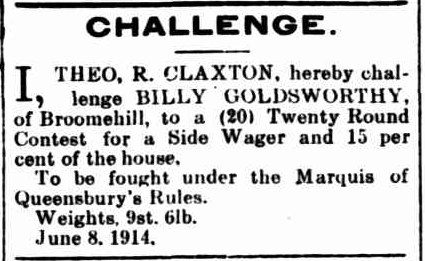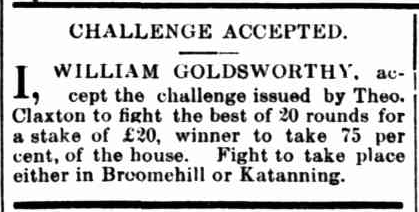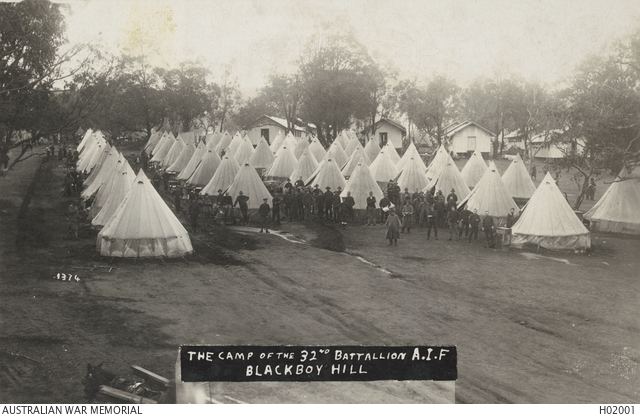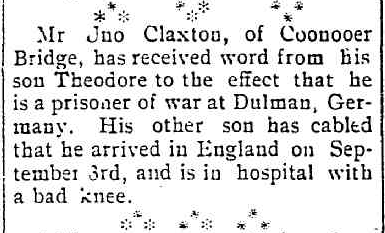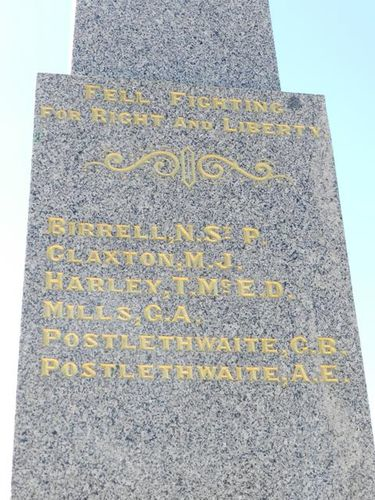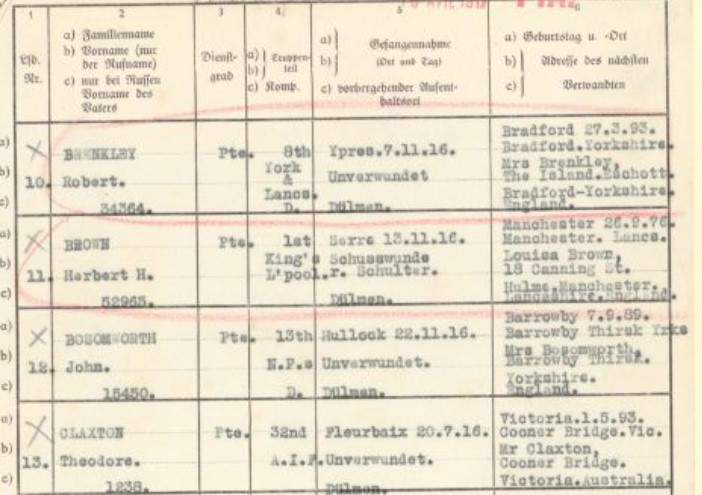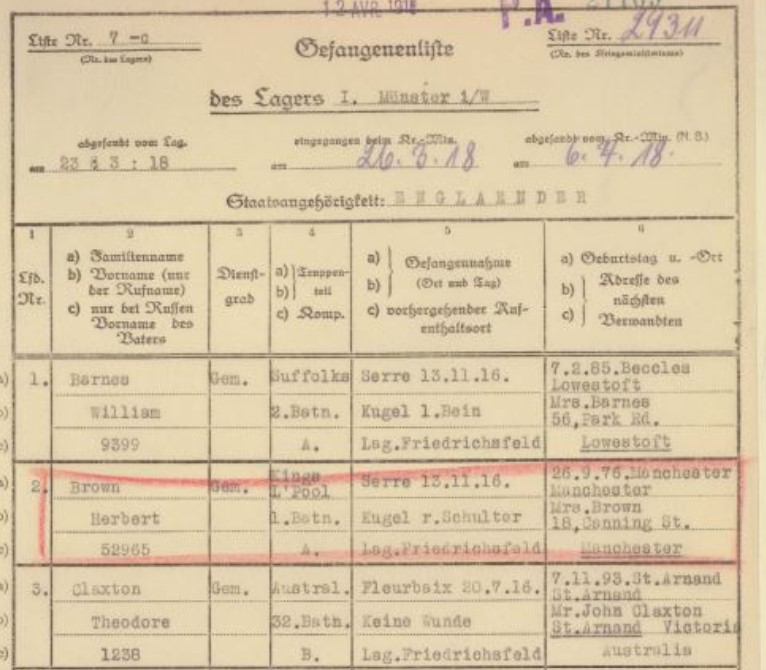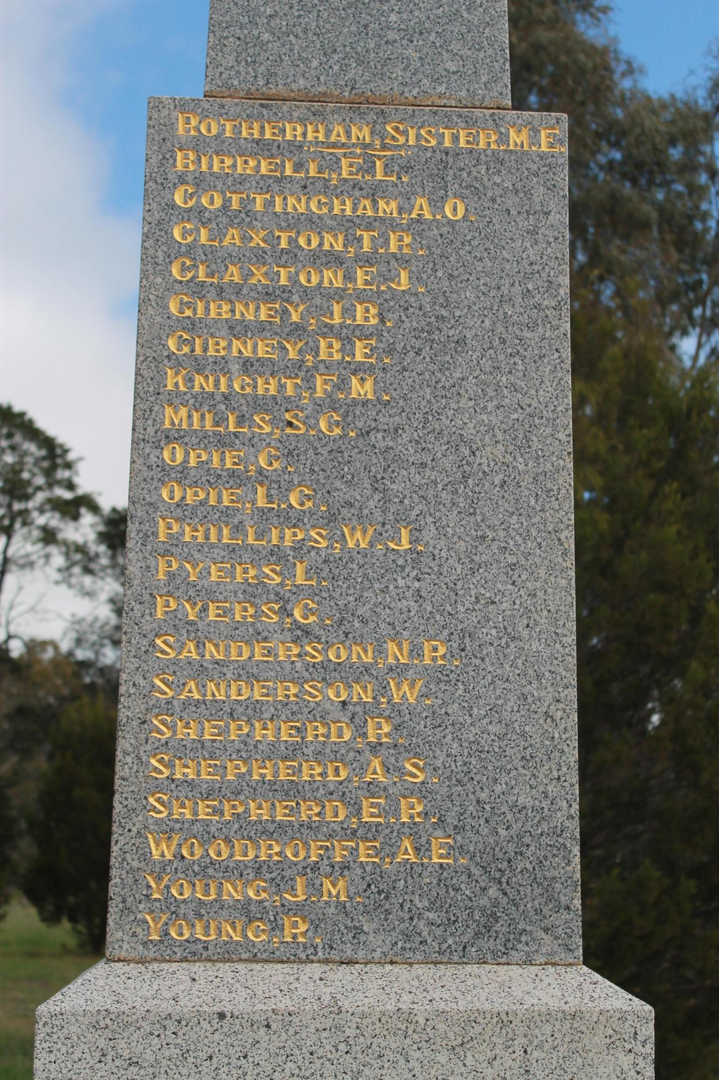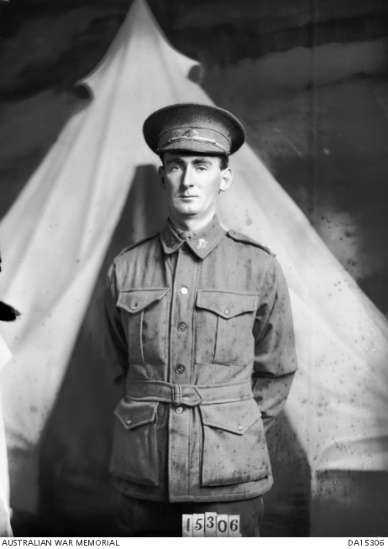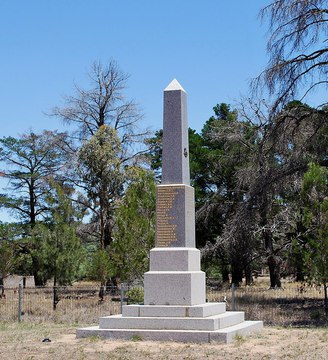
Theodore Robert CLAXTON
Eyes blue, Hair fair, Complexion fair
The Claxtons of Yawong, Coonooer Bridge and St Arnaud in Victoria
Stop Press - 24th April 2023 Pheasant Wood Identification
The minister has this day (24 April 2023) announced that Maurice has been identified as being buried in Pheasant Wood Cemetery
Our genealogical research is part of a collaborative effort with families, The Fromelles Project team of the Unrecovered War Casualties Section – Army and other interested folk. Without this spirit of co-operation, very few identifications could be made.
We wish to acknowledge and applaud our volunteer researchers who have worked many thousands of hours to achieve these, and so many other identifications.
At this time of great joy for those families of Fromelles soldiers just identified, and for our Association members, we are also thinking of the many, many families who hoped for an identification, but that has not occurred at this time.
John Claxton, a farmer, and Sophia Buncle were married in 1885 in Victoria and lived at Yawong and Coonooer Bridge near St Arnaud. They had four sons, Edward John, Harold Henry, Maurice James and Theodore Robert. In 1910, Sophia died from dropsy and heart disease at the age of 50.
John remarried Ellen Mills, a local girl, and they had a daughter Dorothy Ellen in 1913.
In 1912, the two younger sons, Maurice and Theodore, travelled to Western Australia with a cousin, John Buncle, to find work and to tour around Australia before returning home to Coonooer Bridge. John had visited the family from WA and suggested the brothers return with him. Once in the west, Maurice found work as a teamster and Theodore as an engine driver. It seems Theodore, at least, got right into the swing of his adventures if the ads below are anything to go by.
Once the war broke out, Edward, Maurice and Theodore would all enlist with the AIF, with Maurice and Theodore part of the 32nd Battalion who fought in the Battle of Fromelles and Edward with the 5th Battalion. One brother was killed in action, another was wounded and taken prisoner and the third invalided home to Australia medically unfit.
The Claxtons of the 32nd Battalion - Maurice and Theodore
Maurice James Claxton, aged 23, enlisted on 21st July 1915 at Katanning, Western Australia, giving his address as Broomehall, more than 500 kilometres east of Margaret River. His younger brother, Theodore, had been working more than 250 kilometres further north at Bruce Rock (east of Perth); he too signed up on 13 July 1915 in Perth. Both Claxton brothers were allocated consecutive service numbers and assigned to D Company, 32nd Battalion.
The brothers undertook initial training at the Blackboy Hill camp. Later, the WA units of the battalion were sent to Adelaide to complete training with the two South Australian units of the 32nd.
The newly formed battalion embarked on HMAT A2 Geelong on 18 November 1915, arriving in Egypt prior to Christmas. For the next six months, Maurice and Theodore served and trained in Egypt with the 32nd and in June embarked for France to join the British Expeditionary Forces at the Western Front.
The Battle of Fromelles
AIF and Red Cross records give no information as to Maurice and Theodore’s experiences at Fromelles but both brothers were initially listed as missing in action on 20 July 1916 with advice being sent to John Claxton as next of kin in late August 1916.
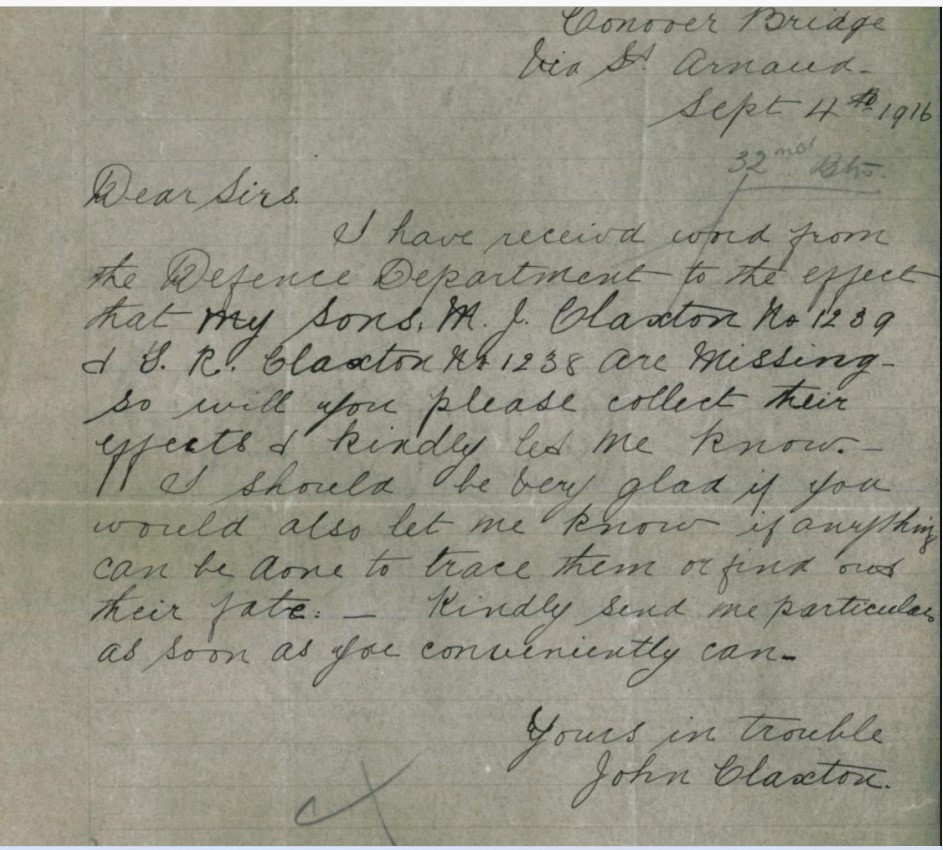
By September, John had received a postcard from his youngest son, Theodore, advising that he had been taken prisoner by the Germans. There had been no updates by military authorities.
While Theodore’s whereabouts was now known, there was still no news of Maurice. Even Theodore was seeking news of him. In a letter home, Theodore said he didn’t know where Maurice got to even though “we were together until we made the charge, when we got separated.” His letter from Germany was reported as follows:
NEWS OF SOLDIERS.
Mr. John Claxton, of Conooer Bridge, is in receipt of the following communication from his son, Private Theodore Claxton, Dulmen (Germany), under date September 1st, 1916 —
" I am writing you these few lines to let you know that I am all right at present, I suppose you got the card I sent you to let you know that I was taken prisoner by the Germans on July 20th. I don't know where Maurice got to. We were together until we made the charge, when we got separated. I am getting treated all right here, but I will not be sorry when the war is over. This is all the news that I am able to tell you."
It was a further twelve months before Maurice’s fate was confirmed – killed in action.
PRIVATE M. J. CLAXTON.
Private M. J. Claxton, son of Mr. J. Claxton, of Coonooer Bridge, has made the great sacrifice in defence of the Empire. The Defence Department in a telegram to the Rev. A. E. Davey stated:—
"It is officially reported that 1239 Pte. M. J. Claxton was killed in action on 20/7/16. Previously reported missing. Convey to Mr. Claxton sympathy of King and Queen and Commonwealth.—Colonel Hawker."
The deceased and a brother enlisted in West Australia and left for Egypt in November 1915. After service there they went straight to France. There they went into action together, and after their first engagement both were reported missing on the 20th July, 1916.
It subsequently transpired that one brother was captured by the Germans, but no tidings of his brother and comrade in arms had come to hand until the receipt of the official message a few days ago conveyed the sad news that he was killed in action.
Probate was granted to his father in October 1918 with Maurice’s estate consisting of his military pay and his one-sixth share in the land left by his mother, Sophia.
Maurice has no known grave and is remembered at VC Corner Australian Cemetery and Memorial, Fromelles, France - panel 5, the Australian War Memorial Roll of Honour, Broomehill War Memorial and Coonooer Bridge War Memorial.
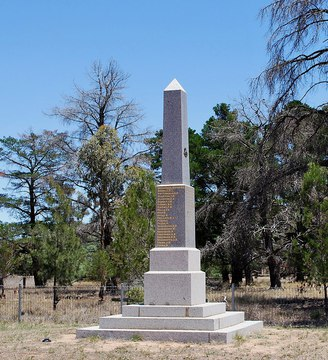
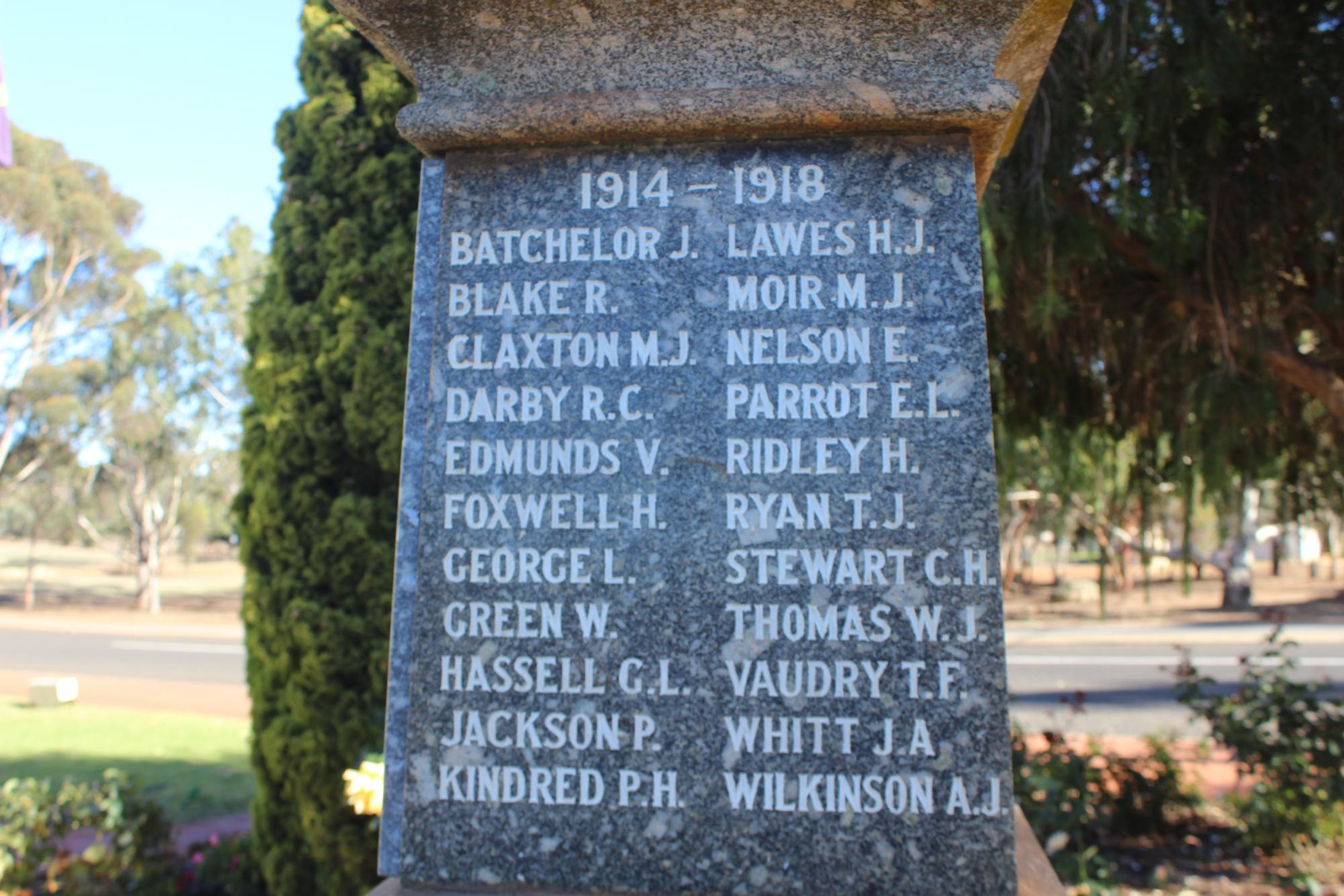
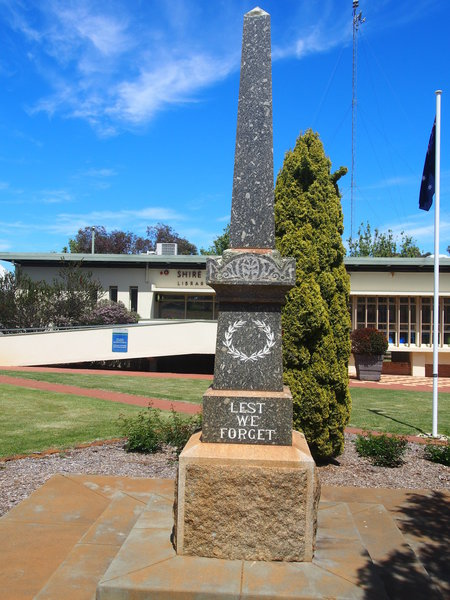
Theodore Robert Claxton
As part of the 32nd Battalion, Private Theodore Claxton, 1238 was likely part of the third and fourth waves that went over the parapets between 6pm and 6.30pm on July 19th. Theodore said in his letter dated 1 September 1916 that he was with his brother, Maurice, until “we made the charge, when we got separated”.
Later in the evening, they were cut off and overrun:
“At Fromelles, wounded men ‘found themselves’ prisoners as German troops overran their positions, while those who remained fighting were captured possessing ‘no opportunity for resistance’ ”
One of those captured by the Germans was Theodore Claxton. Approximately 482 prisoners of war were captured at Fromelles and over the next few weeks, all were transported to prison camps in Germany:
The treatment of prisoners varied greatly, but they generally fared better the further away from the front line they were moved. After capture, officers were separated from their men, the latter being paraded through the streets of Lille and interrogated at a Napoleonic fort known colloquially as “The Black Hole of Lille”… The Fromelles prisoners were gradually distributed across Germany, where they were imprisoned in camps alongside British, French and Russian troops.
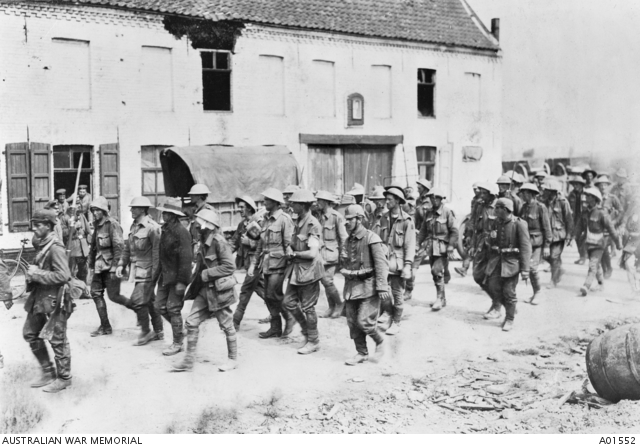
Theodore was originally sent to Dulmen Prison in Germany where he was listed as wounded having suffered severe bruising as a result of shell fragments from the battle. Theodore was to stay at Dulmen until February 1917.
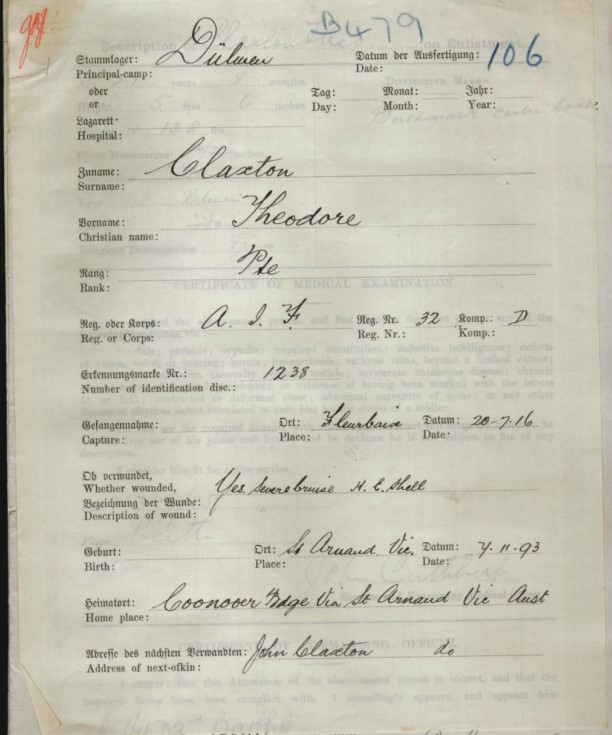
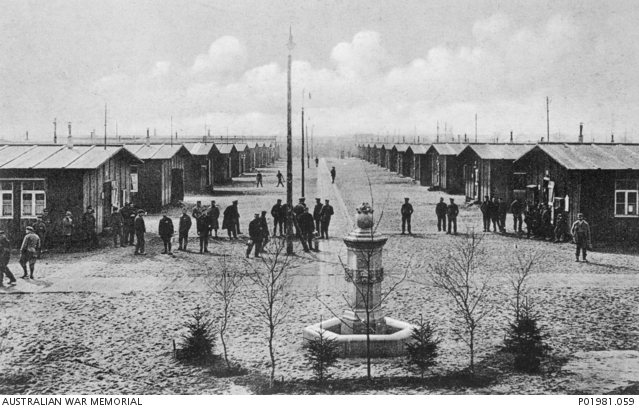
After enduring winter in Dulmen, Theodore was transferred in February 1917 to Friedrichsfeld, a larger German prison camp north of Cologne about 1 hour south-west of Dulmen. It had a reputation as being one of the better camps having space for physical activity and for the growing of vegetables. From Friedrichsfeld, Theodore wrote:
A SOLDIER'S LETTER. PRIVATE THEODORE CLAXTON.
Mr. John Claxton, of Coonooer Bridge, is in receipt of a letter from his son, Private Theodore Claxton, who has been a prisoner of war in Germany since 20th July last. Under date March 1st, 1917, Friedrichsfeld, he says
—I am writing the answer to your ever welcome card which I received the other day, and was glad to hear that you were all well. Things are the same as usual here, only the weather is changing for the better. How are the crops and grass out in Australia now?
The harvest would be in full swing now. I suppose the old home is the same as when I left. Many a time I feel that I would like to be back again to have a climb over the old hill and other places.
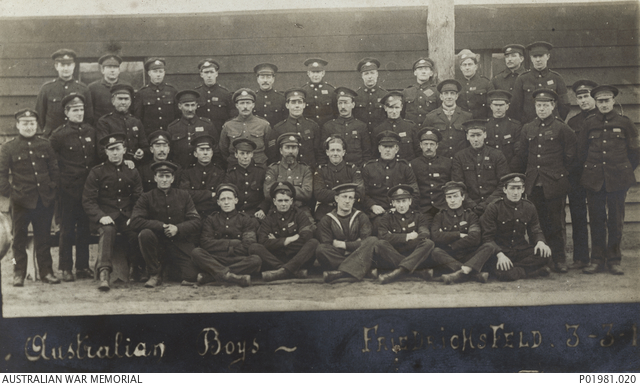
On 5th December 1918, Theodore returned to England. He was promptly repatriated home arriving in Australia on 9th February 1919 where he soon married Ada Violet Ford and their son Maurice Theodore was born later that same year.
Theodore took up land in country Victoria at Wycheproof as part of the Soldier Settlement Scheme where conditions of the land grant required that the returned soldier live on the land for a period of time. In 1927, he sold his lease and moved to Kerang before eventually settling in Boort where he was employed as a water bailiff whilst Ada ran a boardinghouse.
Theodore passed away in 1968 in Boort and is remembered at the Coonooer Bridge War Memorial.
Edward John Claxton
The oldest son of John and Sophia, Edward was a farmer from Coonooer Bridge via St Arnaud, Victoria prior to enlistment. Born in 1888, he was named after his grandfather, a native of Elm, Cambridgeshire, who moved to Australia in the 1850s to settle.
Edward enlisted in February 1916 aged 27 years but it was not until 3 July 1916 that he embarked with the 5th Battalion from Melbourne on HMAT A33 Ayrshire.
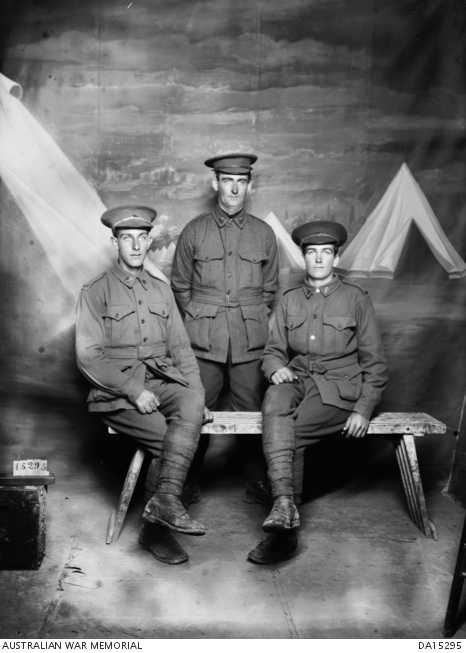
Edward arrived in Plymouth, England on 2 September 1916 – just around the time that his father was receiving news that Maurice was missing and that Theodore had been taken prisoner. A difficult and confusing time for all.
On arrival in England, Edward was hospitalised suffering synovitis of the right knee and he was returned to Australia on 22 February 1917 and medically discharged.
Like his brother Theodore, Edward applied successfully for a soldier settlement property, settling first at Coonooer Bridge before later moving to Kerang. He married Ivy King in 1926 and they had four daughters. Edward passed away in 1956 and he is remembered for his service at the Coonooer Bridge War Memorial, alongside his brother Theodore.
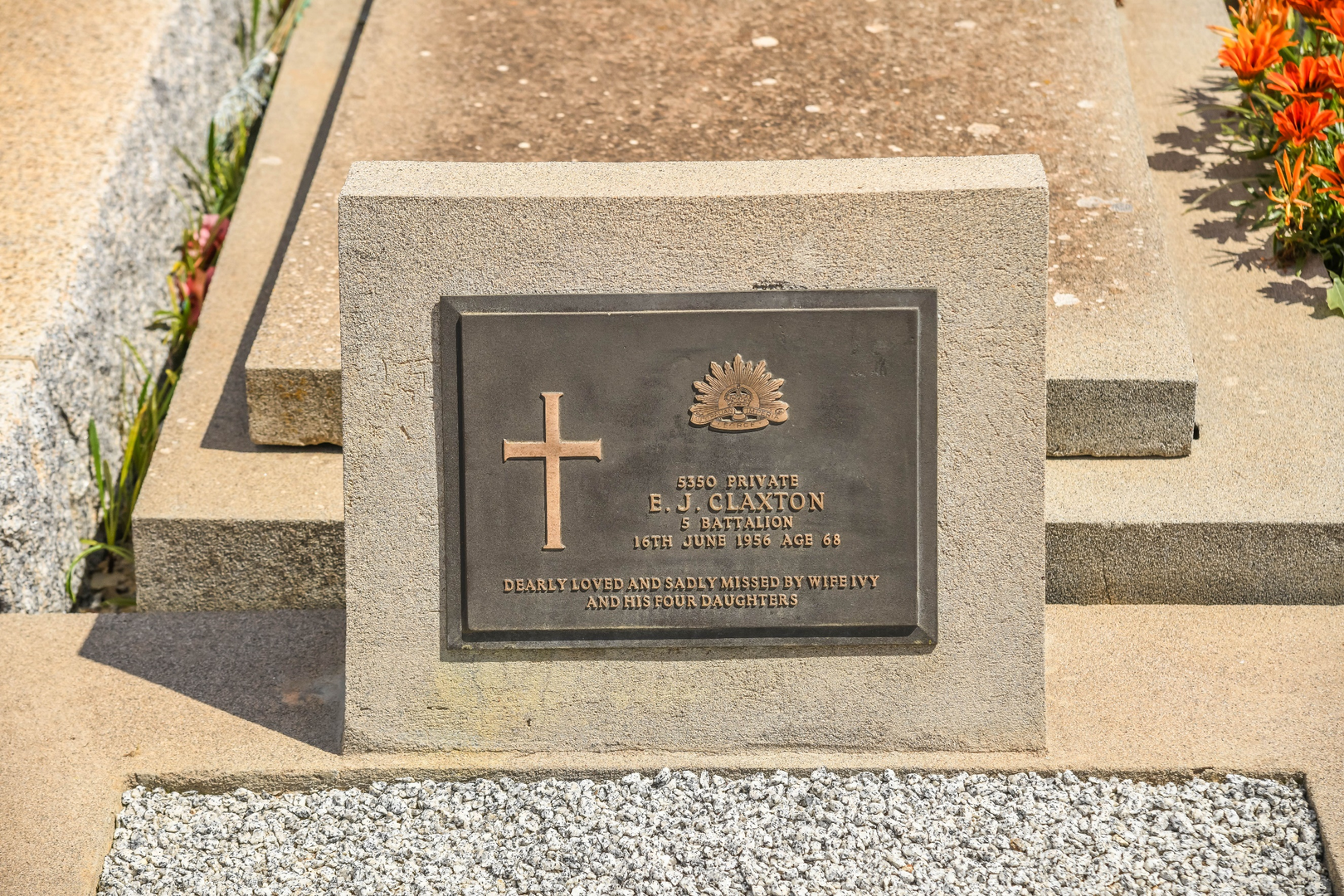
The Claxton family – further service
In addition to the three Claxton brothers serving with the AIF, there were a number of cousins who also served
- Private George Harold CLAXTON, 3132, died from influenza while serving with the 28th Battalion in Abbeville, France.
- Private Percival Francis (known as Tom) CLAXTON, 6293, of the 21st Battalion was wounded in action and returned home.
- Sergeant John Joshua KING, 1692, served with the Australian Naval and Military Expeditionary Force.
Two of Ellen’s brothers - Pte Sydney Gordon MILLS, 695, and Corporal George Arthur MILLS, 416 - also fought in World War 1 with the 8th Battalion. George was killed in action at Ypres, Belgium on 4 October 1917 and, like Maurice, has no known grave.
In later years, Harold’s son, Private 3/2845 Edward Charles CLAXTON – nephew to Maurice, Theodore and Edward – served in the Korean War. He died from wounds in 1952.
Found at Last
On 24th April 2023 news was released that Maurice has been identified as one of the soldiers buried at Pheasant Wood Military Cemetery at Fromelles, France. We will update his story to include details of the ceremony when it is held in July 2023.
The Fromelles Association would love to hear from you

Contacts
(Contact: carla@fromelles.info or geoffrey@fromelles.info).
(Contact: army.uwc@defence.gov.au or phone 1800 019 090).
Donations
If you are able, please contribute to the upkeep of this resource.
(Contact: bill@fromelles.info ).
